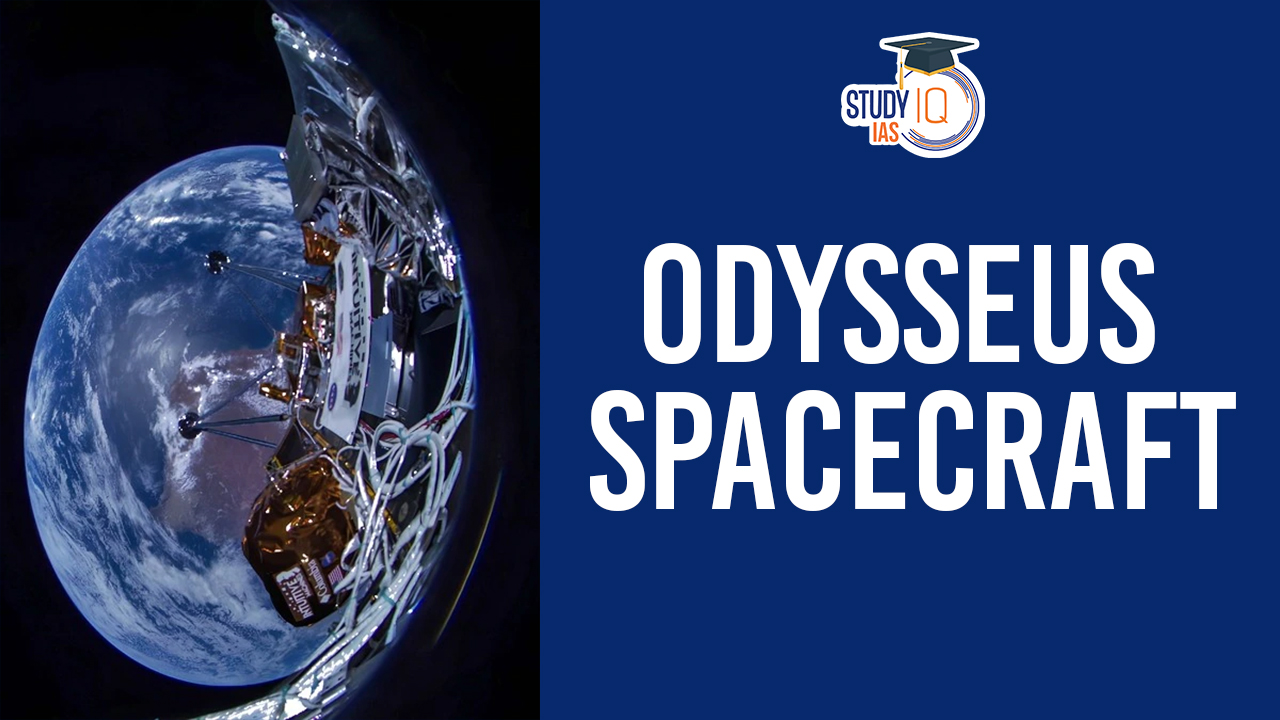Table of Contents
Context: Recently the US-based company Intuitive Machines launched its robotic lunar lander, Odysseus, from NASA’s Kennedy Space Center in Florida
About the Lander
- Odysseus, launched by Intuitive Machines, is a lunar lander on the IM-1 mission under NASA’s CLPS initiative.
- Mission aims: Conduct experiments, and tech demonstrations, and gather data for NASA’s Artemis program.
Key Features of Odysseus Lander
- Solar panels: The lander’s solar panels can generate 200 watts of power on the moon’s surface.
- Main engine: The lander’s main engine uses liquid methane as fuel and liquid oxygen as oxidizer. The engine is the first of its kind to use these propellants.
- Landing leg: The lander has a landing leg.
- Helium tank: The lander has a helium tank.
- Payloads: The lander carries five NASA payloads and commercial cargo.
- Camera system: The lander has a camera system called EagleCam that captures the lander’s descent.
- Science and technology experiments: The lander carries science and technology experiments that could help with future lunar landing missions.
- Sculpture: The lander carries an original sculpture designed in collaboration with artist Jeff Koons.
The Odysseus lander is part of Intuitive Machines’ Nova-C lander, which is named after the mythological Greek hero.
Objectives of Odysseus Lander
- Test spacecraft systems
- Assess the environment in the south-polar region
- Become the first commercial U.S. vehicle to make it to the lunar surface
- Carry out scientific investigations and technology demonstrations
The lander, nicknamed “Odie” or IM-1, is privately built and carries five NASA payloads and commercial cargo. It also carries Embry-Riddle Aeronautical University’s Eaglecam, which will take pictures of the lander as they both descend.
Significance
- Opening Doors to Wider Lunar Exploration: Odysseus’s successful landing signifies the capability of private American spacecraft to operate on the Moon, paving the way for expanded lunar missions by both NASA and commercial entities.
- Part of NASA’s CLPS Program: Odysseus is integral to NASA’s CLPS program, leveraging commercial companies to transport payloads to the Moon and accelerating lunar exploration.
Challenges
- First Lunar Landing Attempt by Intuitive Machines: The mission marks Intuitive Machines’ inaugural lunar landing attempt, highlighting the significant milestone for the company and the challenges associated with executing a successful lunar mission.
- Historical Failures of Private Lunar Landing Attempts: Past private lunar landing attempts have faced obstacles and failures, emphasizing the technical, logistical, and operational challenges inherent in lunar exploration. Intuitive Machines must overcome these hurdles to demonstrate its capability to deliver reliable lunar missions.


 Comprehensive Remote Sensing Observation...
Comprehensive Remote Sensing Observation...
 Perovskite Solar Cells, Objective and Ch...
Perovskite Solar Cells, Objective and Ch...
 Navy-Marine Expeditionary Ship Interdict...
Navy-Marine Expeditionary Ship Interdict...





















